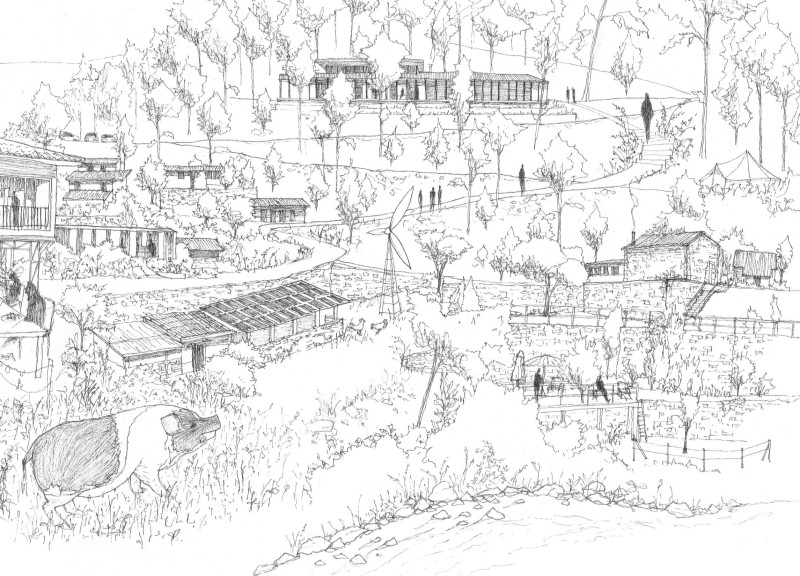5 key facts about this project
At first glance, the architecture presents a seamless integration of form and function. The exterior facade is characterized by a balanced use of materials, combining locally sourced stone and warm timber accents, creating a welcoming atmosphere that resonates with the environment. The structural elements are designed to optimize natural light, featuring expansive windows that not only provide stunning views but also enhance energy efficiency. This conscious design approach underlines a commitment to sustainability, which is integral to the project’s philosophy.
The project functions primarily as a community hub, intended to foster interaction and collaboration among residents. Spaces within the building are flexible, allowing for a variety of activities, from formal gatherings to informal meet-ups. The layout encourages movement and spontaneity, with open-plan areas that transition seamlessly into private nooks, cleverly facilitating both social engagement and personal retreat. Essential amenities, including meeting rooms, creative spaces, and recreational areas, are thoughtfully distributed to truly cater to the diverse needs of the community.
A notable aspect of the design is the incorporation of green spaces both within and outside the building. An interior courtyard adorned with native plants offers a tranquil respite while contributing to biodiversity. This connection to nature not only enhances the aesthetic quality of the design but also promotes well-being and mindfulness among its users, reflecting a growing awareness of the importance of nature in urban environments.
The project also showcases unique design approaches that differentiate it from conventional buildings. One such approach is the use of modular construction techniques, which not only streamline the building process but also minimize waste and reduce the carbon footprint. This innovative method allows for greater flexibility in design, accommodating future changes or expansions as community needs evolve. Furthermore, the building incorporates passive design principles, such as natural ventilation and thermal mass, to maintain a comfortable indoor climate without the reliance on mechanical systems.
Materials used in the project are selected not only for their aesthetic appeal but also for their sustainability credentials. Reinforced concrete provides structural integrity, while sustainably sourced timber lends warmth to the interior spaces. Additionally, the use of high-performance glazing ensures that energy consumption is minimized, aligning with the project's objectives of environmental responsibility.
As the architectural narrative unfolds, it becomes evident that this project is not merely a structure but a vital component of the community fabric. It serves as a catalyst for social interaction, a platform for cultural exchange, and a beacon of sustainable design principles. The careful consideration of each element—from the overarching concept to the minutiae of its execution—demonstrates a commitment to creating architecture that is both functional and meaningful.
For those interested in gaining a more profound understanding of the architectural intent behind this project, exploring the architectural plans, sections, designs, and innovative ideas further will provide valuable insights into how this building stands as a testament to thoughtful architectural practice in a contemporary context. This project invites engagement and reflection, encouraging everyone to appreciate the intricate relationship between architecture, community, and environment.


























